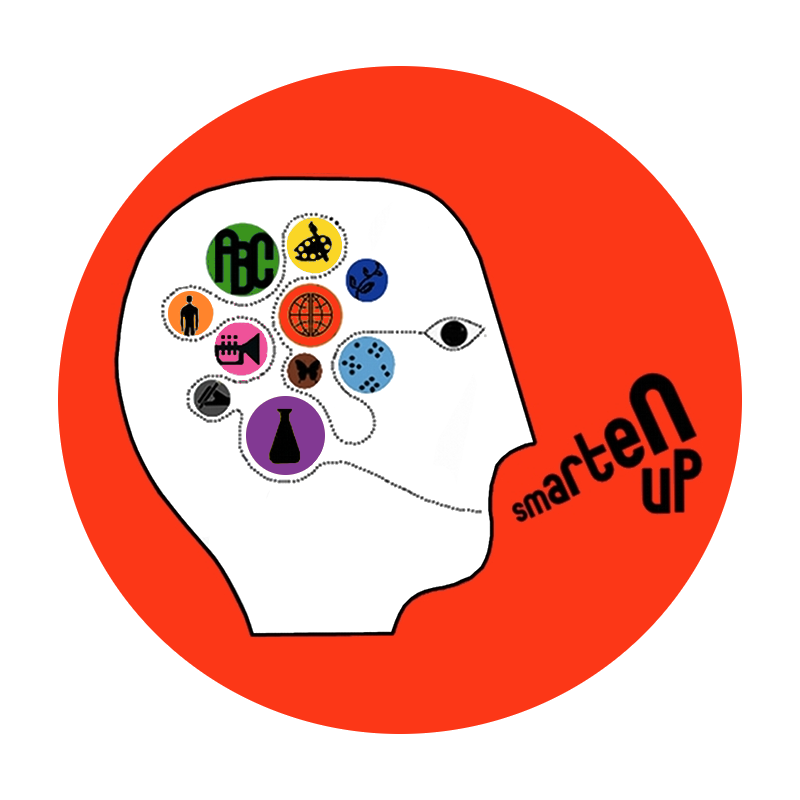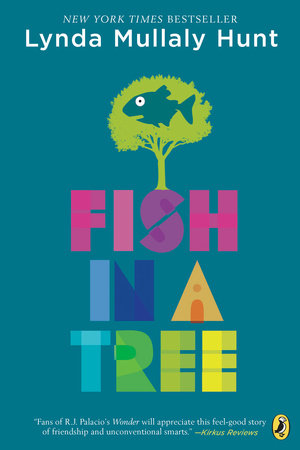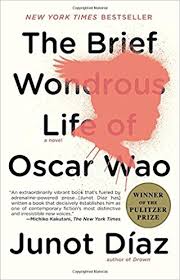It’s finally summer! Can you feel that heat and the outdoors beckoning? These two months can mean a much needed break from the stress and rigidity of school and a chance for students to let loose and be creative.
While it is important for kids to have fun, that doesn’t need to come at the expense of their learning! If your child is not heading out of town this summer or will be spending a few weeks in the city, it can be difficult to figure out what he or she can do to keep their bodies active and their minds engaged. But don’t despair! New York is an incredible playground for kids to have fun and learn at the same time.
Here are some great ideas to keep your kid's mind engaged and body active this summer:
Arts
Take a Photography Class: Encourage your child to take up a new skill like basic photography. Most classes for beginners don’t require any fancy equipment in the beginning. It is a great way to see if a passion turns into a profession as they grow older. Check out the teen offerings at Photo Manhattan and Photo Uno
Children's Museum of the Arts: Most of the amazing original sculptures, paintings and multimedia creations at the Children’s Museum of the Arts are made fresh everyday by the artists...which are actually the visitors. Little ones from across the city and around the world convene at this kid’s museum to let their imaginations and creativity run free as they take part in the daily workshops and studio activities.
Queens Museum: Your child can make his or her own piece of art at The Queens Museum, which offers free art activities on Sundays.
Wave Hill: Your little one can get their creative juices flowing at the beautiful Wave Hill Garden and Cultural Center in Riverdale. They have a variety of forest and woodland programs as well as its weekly Family Art Project. Head over on Saturdays and Sundays from 10am—1pm to participate in the craft extravaganza. Although the class itself is free, admission to Wave Hill is $2 for children 6 and up.
Shakespeare in the Park: Get your kid excited about Shakespeare in the best way; The Public Theater offers free plays and big stars every summer at Shakespeare in the Park, one of the city's most beloved cultural events.
Theater Walking Tours: If you have a child interested in theater, they will love the Broadway Up Close tour of the Theater District, where guides not only share stories about the iconic stages and their actors, but also can get into the behind the scenes fun and history of the real life Alexander Hamilton, with a trip downtown for the “Hamiltour.”
Free Museum Days: Museums in NYC are filled with awesome exhibits, and many museums offer free entrance on select days and times. Expose your kids to as much arts and culture as possible, for free!
MoMA Art Lab: The Art Lab, one of many family-friendly programs at MoMA, is an all-ages space that encourages hands-on experimentation, play, and creativity through activities directly connected to the MoMA collections that mom and dad love to look at. Art Lab visitors—ranging in age from toddlers to teens—get to touch anything, make a mess and even be artists themselves.
Whitney Museum of American Art: A great experience for parents and kids, at the Whitney Museum you can enjoy private tours of their most popular exhibitions, led by Whitney Teaching Fellows and Ph.D. candidates. On Saturdays and Sundays, kids can even use inspiration from the galleries to make a masterpiece during Open Studio For Families.
Science & Math
Liberty Science Center: The Liberty Science Center lets kids be their best scientist selves at over four floors of exhibits. At their MakerLab, they offer hands-on classes with LSC educators who will show your kids (age 10 and up) how to use the latest programming and fabricating tools; Make a costume, saber, wand, Minecraft model or even your own, original video game. There is also an IMAX studio, which includes features on robots, humpback whales or the Hubble telescope.
G.O.A.L.S. for Girls: G.O.A.L.S. stands for Greater Opportunities Advancing Leadership and Science, so if you have an 8th or 9th grade daughter who's really into STEM (science, technology, engineering, and mathematics) subjects, then this is for you: participants will engage in field studies, workshops, and hands-on STEM activities. The program runs for six weeks in July and August.
Robofun – This coding camp is great for absolute beginners and middle school kids, RoboFun teaches Game Design and Lego Robotics for young aspiring coders.
Launch Math & Science Centers – Students in first through eighth grades can learn computer programming with Scratch, Python, and mobile apps. Summer camps are available at the UWS location, plus two satellite locations during the summer.
Science Saturday at Hudson River Park: On June 2 (at Pier 45), July 14 (at Pier 84) and Aug 11 (at Pier 25) from noon–4pm, families can experiment with hands-on activities at Hudson River Park. Hudson River Park’s Estuary Lab backs the programming, so you will get an ecological-focused itinerary such as touch tanks, performances from Mad Science and catch and release fishing, among other activities. Dates: June 2 (at Pier 45), July 14 (at Pier 84) and Aug 11 (at Pier 25) from noon–4pm
Rose Center for Earth and Space: The American Museum of Natural History houses the Rose Center for Earth and Space, a glass enclosure that houses the 87-foot-diameter Hayden Sphere. Families can explore the 13-billion–year history of the universe, pick up cool facts about planets, stars and galaxies and watch space shows. The Museum collaborates with NASA to keep all of its visual maps up to date.
New York Hall of Science: At this great Queens museum, kids can get hands-on with hundreds of interactive exhibits and activities that bring science, technology, engineering and math to life. Built for the 1964 World's Fair, NYSCI is home to a revolving lineup of displays about light, 3-D printing, outer space and robots, plus the Design Lab, where kids can tackle activities at five stations: Backstage, Sandbox, Studio, Maker Space and Treehouse. Kids can also climb on a rope web and play mini golf at the massive Science Playground and Rocket Park.
Children's Museum of Manhattan: The Children’s Museum of Manhattan’s has two permanent exhibits that activate different aspects of kids’ imaginations: “EatSleepPlay,” where kids can crawl through a digestive system, help pump a giant heart, and burn energy by ducking lasers and balancing on a beam, and “PlayWorks,” for younger kids.
History
Snug Harbor Cultural Center: A quick ferry ride to Staten Island will get you to Snug Harbor, home to a scenic cultural center and the Staten Island Children's Museum. There are hands-on exhibits, interactive song and dance activities and a multitude of craft projects. Also home to the Connie Gretz Secret Garden, here kids can wander through the maze-like shrubs inspired by Frances Hodgson Burnett's classic novel, The Secret Garden. There's even a miniature castle and rose garden at the end of the trail.
Historical NYC Walking Tours: Take your kids on a fun and engaging walking tour, especially for history fans! Learn about New York during the Revolutionary War, or the local history of your neighborhood like Chelsea or the Lower East Side, with the extremely well-informed and engaging tour guides at Big Onion Tours.
The Cloisters: The Cloisters are located on four acres overlooking the Hudson River in northern Manhattan's Fort Tryon Park. Deriving its name from the medieval cloisters that form the core of the building, it presents a harmonious and evocative setting Devoted to the architecture of medieval Europe (and home to the wonderful, “Unicorn Tapestries”), this branch of the Metropolitan Museum of Art is full of incredible medieval artifacts and indoor-outdoor gardens. Within the museum, you can view jewelry, sculptures, paintings, metalwork and furniture. After, go for a walk overlooking the Hudson or the Fort Tryon Park.
American Museum of Natural History: The American Museum of Natural History houses one of the most impressive collections of dinosaur fossils in the world. While the dinosaurs collection is certainly awe-inspiring, make sure to also take your young science and history enthusiast to visit the Hall of Ocean Life, the Hall of North American Mammals and the Hall of Biodiversity.
Intrepid Sea, Air & Space Museum: At this museum, you will get to climb aboard this former aircraft carrier, which fought in World War II, the Cold War and the Vietnam War, and survived five kamikaze attacks. You can also board the Bell 47 helicopter, navigate the interacting submarine, and steer an airplane in the Exploreum hall. Make sure you visit the Space Shuttle Pavilion, which houses the giant NASA orbiter Enterprise. In 2018, visitors can explore the history of USS Growler through "A View From the Deep" to learn about the world's first nuclear submarines.
The Tenement Museum: At this Lower East Side museum, kids can see how their ancestors and New Yorkers who came before them lived on a one hour tour of the former tenement, which covers in great detail how the German-Jewish and Irish families struggled to find their way in their new country through tough labor and living conditions. You also get to taste how these immigrants ate, with a sit-down meal of various foods that were sold around the neighborhood with a tasting at the tenement. If you plan well, you can introduce your kid to a costumed interpreter playing a past resident of 97 Orchard Street!
Brooklyn Children’s Museum: This big yellow-roofed Crown Heights museum, which opened in 1899 was one of the first museums in the country geared specifically to kids. It has permanent exhibits that pay homage to the borough, such as “World Brooklyn,” a mini cityscape where kids can shop at fake Mexican bakeries and international bodegas, or “Neighborhood Nature,” which explore the creatures and plants found in everyday Brooklyn backyards. There are also daily free workshops where kids can learn and get crafty.
New York Transit Museum: At this museum, true to its name, your child will learn fascinating facts about our city’s transit system, in an authentic 1930s subway station. The museum uses pictures, models and vintage cars, which you can ride, to tell the fascinating story about how New York got its underground tunnels and subway system.
The Metropolitan Museum of Art: While the Met can be overwhelming and it is hard to know where to start, for your history buff kids, start by walking through the Temple of Dendur in the museum’s Egyptian Wing, visit the Sphynxes, the statue of the Nile crocodile and even check out the coffin of Khnumhotep, where you’ll see a real mummy
Outdoors Activities
Adventure Course Sunday series: For older (and braver!) kids, they will love this outdoor zip line and elevated adventure course (all for free) on Sundays. This year, the Adventure Course Sunday series runs from May 6–Oct 18, and each event is free and available to kids ages 8 and up.
Queens County Farm Museum: You don’t have to travel far from the city to get goats, sheep and other farm life! At the Queens County Farm Museum, the the oldest continually farmed site in the state, barnyard animals are available for feeding and petting. You can also take a walk around the 47-acres on a tractor-pulled hay ride, or do it yourself through their beautiful gardens. For a more educational bent, consider enrolling your agrarian enthusiast child in their summer program where they will get hands-on instruction on running a small-scale farm!
LeFrak Roller Rink: In Prospect Park you can find a fun summer spot for biking or roller skating on the 16,000-square-foot roller rink. For those looking to beat the heat, bring bathing suits in preparation for the 20 water jets of the LeFrak Center’s Splash Pad!:
Battery Urban Farm: At this city park, your kids can get down and dirty in garden soil and learn about/take home fresh produce. At Battery Urban Farm, the student farmer-run one-acre educational plot has more than 100 varieties of organic veggies, fruits, grains, flowers and other plants. It also donates its produce to food pantries and local school cafeterias and everyone is welcome to volunteer every third Saturday of the month from 10am to 1pm (register in advance).
NYC Audubon: If your kid loves animals and has a soft spot for birds, the nYC Audobon can open their eyes and ears to hundreds of species they may never have seen before! The New York City Audubon not only protects the birds, wildlife and their natural habitats in the area but they also have fun workshops and school programs to teach kids how to identify their birds and offers hope and tips for caring for the environment.
Brooklyn Botanic Garden's Edible Academy: This branch of the New York Botanical Garden has the goal of immersing children in nature. It offers planting projects, cooking demonstrations or hands-on activity in the greenhouse.
Bronx Zoo: Bronx Zoo is New York City’s biggest zoo, with more than 5,000 animals, including lions, tigers, the World of Reptiles, an outdoor baboon reserve, a sea lion pool and an exhibit dedicated entirely to animals of Madagascar. The zoo is also dedicated to conservation and science and offers daily summer camp programs.
New York Aquarium: This branch of the Wildlife Conservation Society, located off the Coney Island Boardwalk, has plenty of fish, sharks, starfish and the mammals and birds that live among them. Otters, seals, penguins and sea lions show off their crazy behavior and skills in the aquatheater during shows.
Randalls Island Park: This beautiful island park is on the edge of the East River near Harlem, the Bronx, and Queens, and includes a huge complex for football, soccer, baseball, and other field sports, as well as trails for walking and cycling.
























